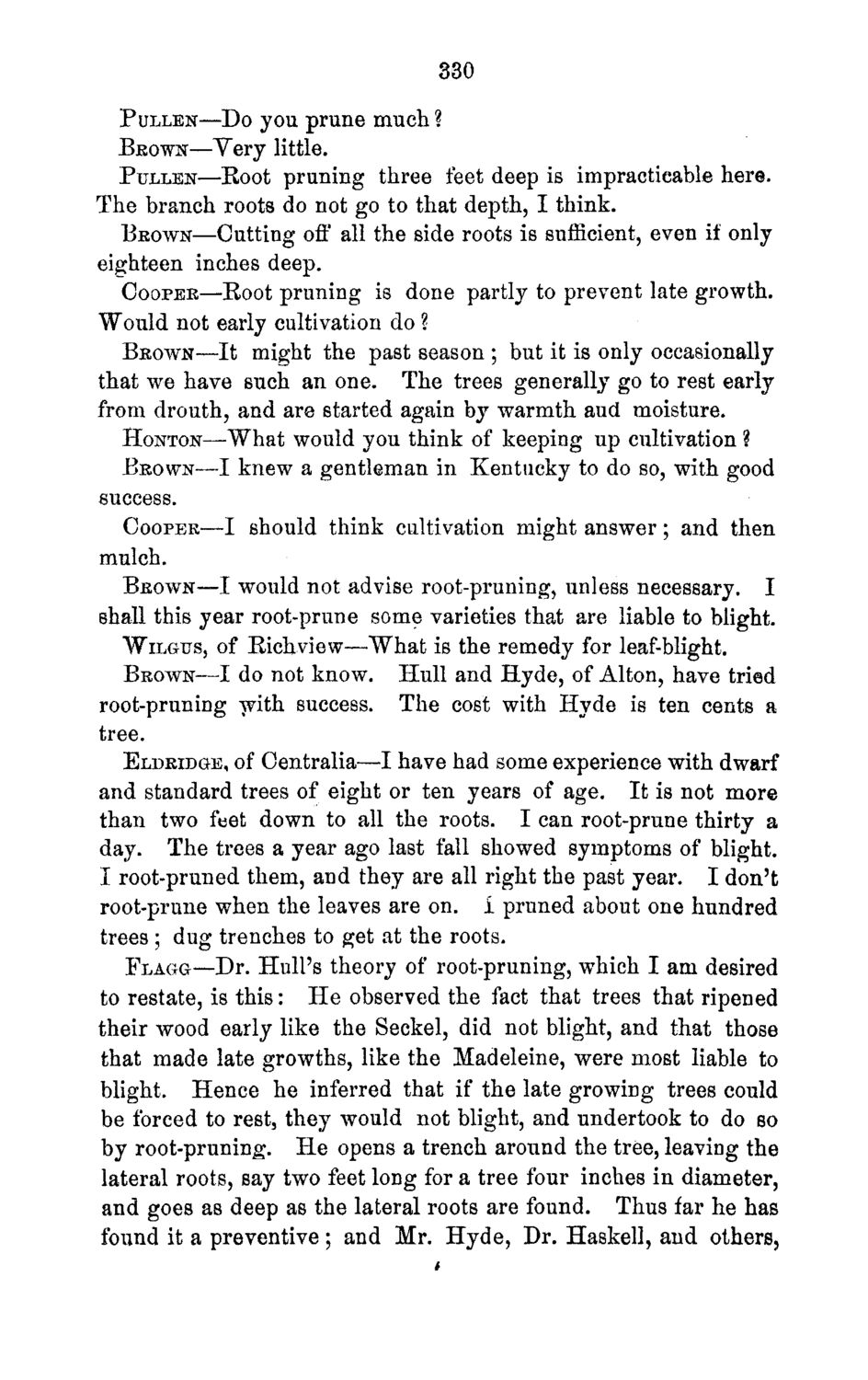| |
| |
Caption: Board of Trustees Minutes - 1870
This is a reduced-resolution page image for fast online browsing.

EXTRACTED TEXT FROM PAGE:
330 PULLEN—Do you prune much ? BROWN—Yery little. PULLEN—Root pruning three feet deep is impracticable here. The branch roots do not go to that depth, I think. BROWN—Cutting off all the side roots is sufficient, even it only eighteen inches deep. COOPER—Root pruning is done partly to prevent late growth. Would not early cultivation do ? BROWN—It might the past season ; but it is only occasionally that we have such an one. The trees generally go to rest early from drouth, and are started again by warmth aud moisture. HONTON—What would you think of keeping up cultivation ? BROWN—I knew a gentleman in Kentucky to do so, with good success. COOPER—I should think cultivation might answer; and then mulch. BROWN—I would not advise root-pruning, unless necessary. I shall this year root-prune some varieties that are liable to blight. WILGUS, of Eichview—What is the remedy for leaf-blight. BROWN—I do not know. Hull and Hyde, of Alton, have tried root-pruning with success. The cost with Hyde is ten cents a tree. ELDRIDGE, of Centralia—I have had some experience with dwarf and standard trees of eight or ten years of age. It is not more than two feet down to all the roots. I can root-prune thirty a day. The trees a year ago last fall showed symptoms of blight. I root-pruned them, and they are all right the past year. I don't root-prune when the leaves are on. i pruned about one hundred trees ; dug trenches to get at the roots. FLAGG~-Dr. Hull's theory of root-pruning, which I am desired to restate, is this: H e observed the fact that trees that ripened their wood early like the Seckel, did not blight, and that those that made late growths, like the Madeleine, were most liable to blight. Hence he inferred that if the late growing trees could be forced to rest, they would not blight, and undertook to do so by root-pruning. H e opens a trench around the tree, leaving the lateral roots, say two feet long for a tree four inches in diameter, and goes as deep as the lateral roots are found. Thus far he has found it a preventive; and Mr. Hyde, Dr. Haskell, and others.
| |